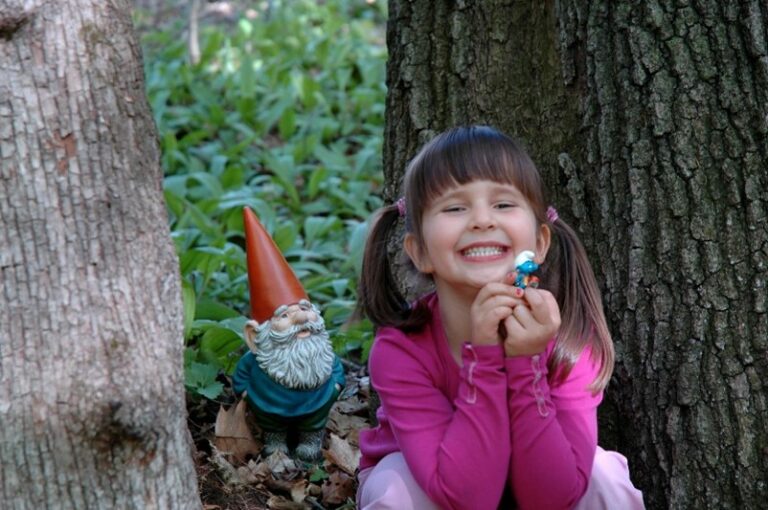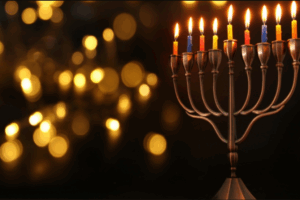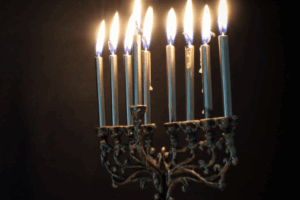- Do you have a family tradition that was taught to you by your parents or grandparents?
- Have you incorporated this tradition in your life and shared it with your children?
My love for gnomes began with my mom, who filled my imagination with their magic. After I became a father, my mom gave me my first set. Their tiny red hats peeking out from a box she’d wrapped with care. She whispered to me: “They’ll watch over your dreams.”
My mom encouraged me to plant a garden. She loved the saying “Sleep, Creep, Walk, Leap” to describe how flowers grow over the seasons. She also said that gnomes are caretaker of gardens. (Just imagine if the Garden of Eden had a Gnome?) My mom’s stories turned our garden into a place of wonder, where I imagined gnomes tending to the flowers with care. Now, her gnomes stand in our garden, a quiet reminder of her love. I’ve shared that same magic with my children, Lucy and Caroline.
Lucy inspired me to grow our gnome collection when she led us on treasure hunts looking for smurfs hidden throughout the forest trails we called the “Enchanted Forest.” She’d announce the rules: “Youngest to oldest, take your turn, no running ahead, no trading of smurfs until the end,” as the children searched for smurfs which I told them were planted by the gnomes.(I am grateful Caroline’s maturity to allow Lucy to take the lead on our treasure hunts.)
The Talmud teaches us that “every blade of grass has an angel standing over it saying Grow, Grow, Grow.” I imagined gnomes as partners to these angels, nurturing both our garden and the traditions that grow across generations in our family.
Tradition, much like a gnome’s quiet work in the woods, often goes unnoticed until we pause to see its beauty. In Jewish life, traditions of lighting Shabbat candles, chanting the Kiddush, and singing the Four Questions at the Passover Seder, contribute to the ritual rhythm of meaning. These individual acts bridge across generations, and us to our remind us of who we are. The Torah tells us, “You shall teach them diligently to your children” (Deuteronomy 6:7), speaking of the commandments and values we pass down. This verse captures the heart of tradition: a sacred duty to share our stories and lessons. The Talmud’s image of angels cheering for each blade of grass mirrors the way our traditions encourage growth, helping us flourish through the generations. Just as my mom shared her love for gnomes with me, and I with my children.
I felt this deeply during Lucy’s Bat Mitzvah, when I shared the story of those treasure hunts. As I watched her read from the Torah, speaking about Avram’s transformation into Abraham, I saw how those playful moments in Lenox had planted seeds of growth. Lucy had grown through our family’s traditions, bringing humor, happiness, and hope which connected with the “H” in Abraham’s name bringing new meaning. The treasure hunts, which left her with a special and sweet smurf collection proudly displayed in her room, were a tradition of their own, teaching her to lead with fairness and joy.
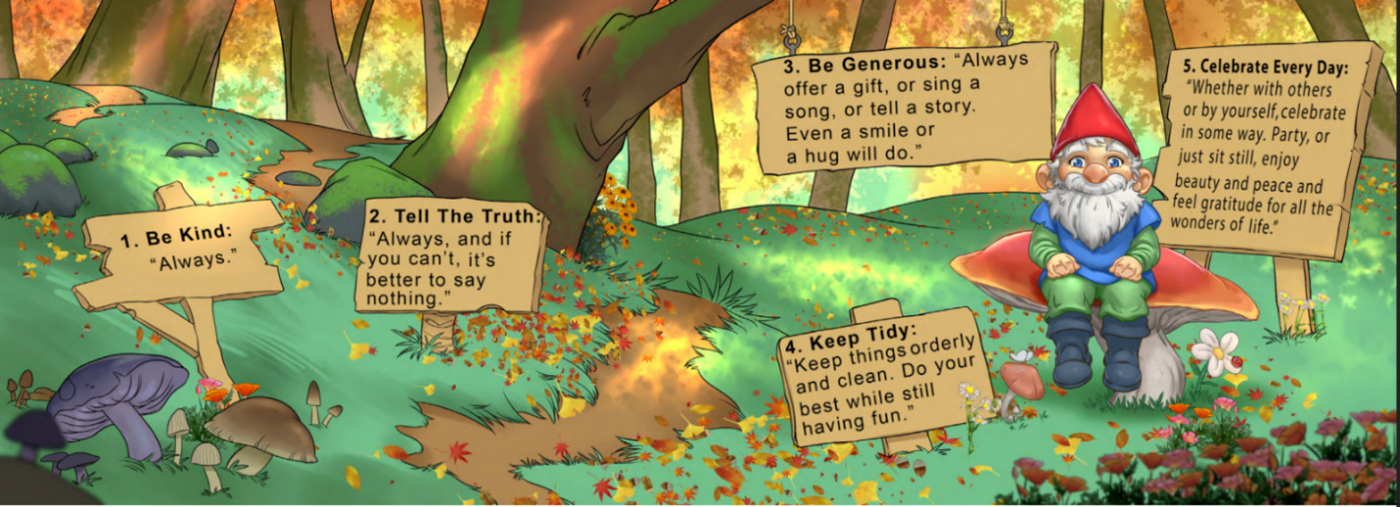
Gnomes, in their whimsical way, teach us how to honor tradition with a light heart. There’s a legend that gnomes live by five simple rules: be kind, tell the truth, be generous, keep things tidy, and celebrate every day. These rules feel like they could have been written by our sages! Take our tradition of chesed, acts of loving-kindness. It echoes the gnome’s call to “always” be kind. When we invite guests to our Sukkah, give for Tzedakah, or share matza at the Seder; we are acting with the same generosity that gnomes encourage. Celebrating every day? That’s the spirit of Shabbat, a weekly pause to find beauty and gratitude in the ordinary.
Traditions come alive when we make them engaging for everyone, especially the youngest among us. At our Passover Seder this year, the younger children brought the Haggadah’s words to life by performing a play about the Ten Plagues. As they acted out each plague, I thought of the Torah’s account in Exodus 7–12, where God sends the plagues to free the Israelites from Egypt. Their playful performance, filled with laughter, turned the story into an adventure they could truly understand, making them active participants in the Seder rather than just sitting quietly at the table..
I would like to explore the concept of magic in the Torah. Many people are familiar with the Magician’s incantation: “Abaracadabara” before performing a magic trick. Let’s explore the biblical origin.
Bara is the second word in the Torah. It means “to create” in Hebrew בָּרָ֣א. (Genesis 1). It is part of the root of Abaracadabara. Dabar in hebrew דָּבָר means to speak. Abaracadabra literally means “I will create as I speak
So how can we bring the gnomes’ magic and the angels’ encouragement into our traditions? Here are a few ideas, inspired by this legacy and my own journey:
Infuse Kindness: As you prepare for your next holiday, do one small act of chesed. Maybe invite a new neighbor to your Shabbat table or share a smile with a stranger.
Celebrate with Play: At your next Seder, make the reading of the Ten Plagues fun for kids, perhaps using finger puppets or a play like ours, turning the afikomen hunt into a magical adventure that grows their love for tradition.
Pause for Gratitude: Like the gnome’s call to celebrate every day, take a moment during your traditions to feel gratitude. As you light the menorah, braid challah, or chant the Shehechayanu to celebrate special happy occasions, these rituals mark the moment and provide an opportunity to gratitude for friends and family.
Keep the Story Alive: Traditions are stories we tell through actions. Share a family memory using family heirlooms for shabbat candles, kiddush cups, seder plates can help keep the family stories and traditions alive. It is also an opportunity for children to create new ritual objects to start new story chapters.
This season, as we gather for our holidays, let’s channel the spirit of the gnomes and the angels. Let’s approach our traditions with wonder, kindness, and a playful heart. Just as my mom did with me, and as I’ve shared with Lucy and Caroline. Let’s make every moment a remembrance of the past, celebration of the present, and spark inspiration for the future.
Please share the story of your tradition with someone you love or with our Breaking Matzo community. Together, we can make every tradition magical, meaningful, and memorable.
Appendix
You can learn how to make your own fun Passover gnome garden to decorate your Passover table here.
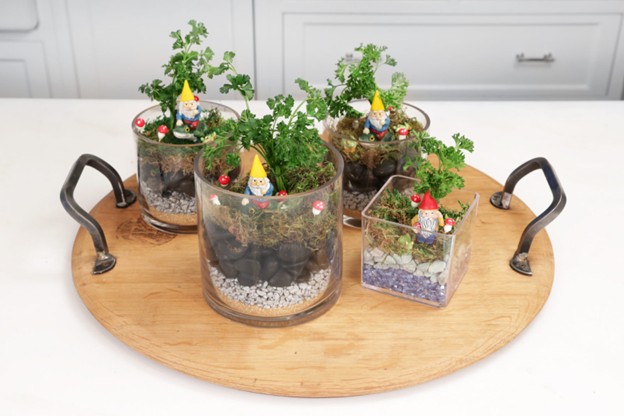
Enjoy a haiku inspired by this blog:
Gnomes guard tradition,
Magic weaves through time’s embrace,
Legacy lives on.

